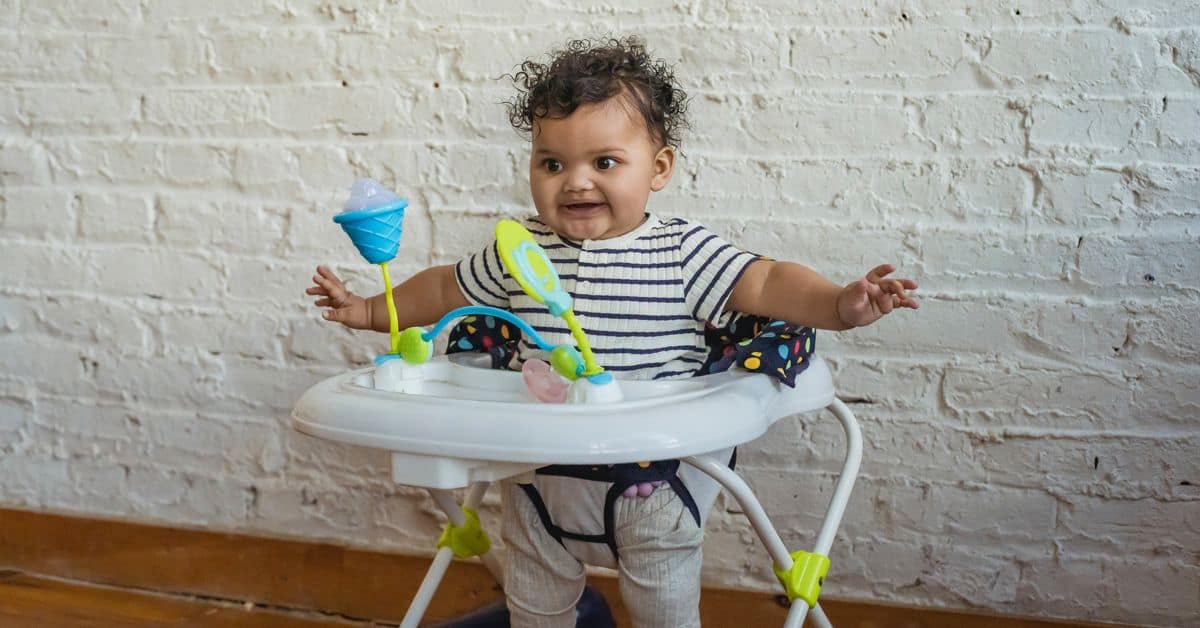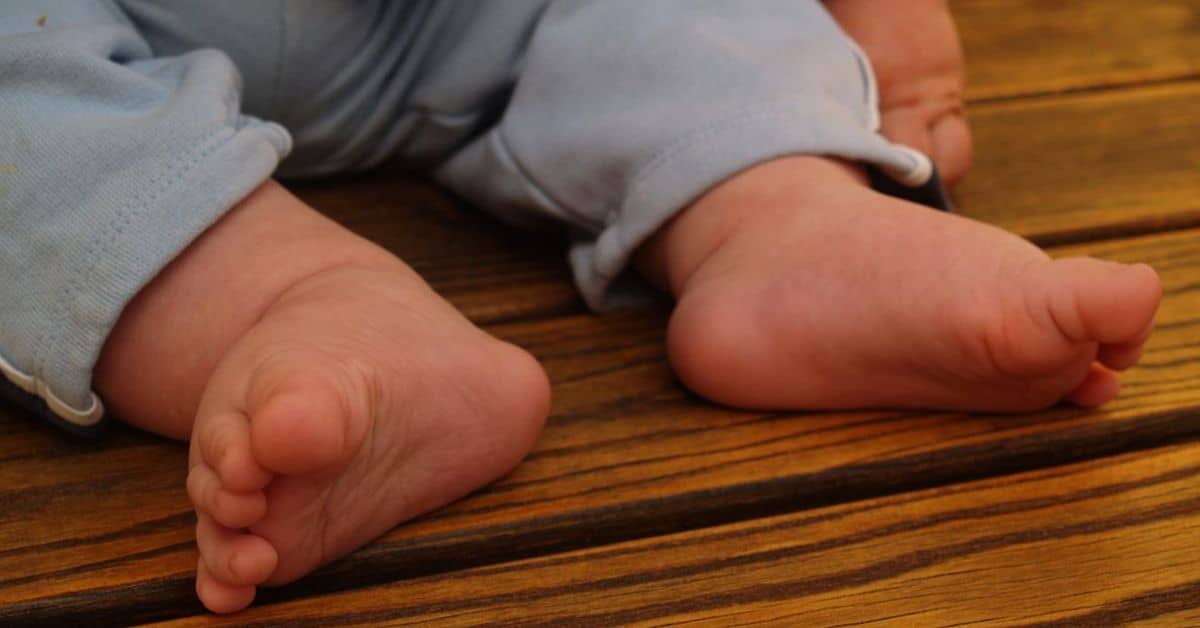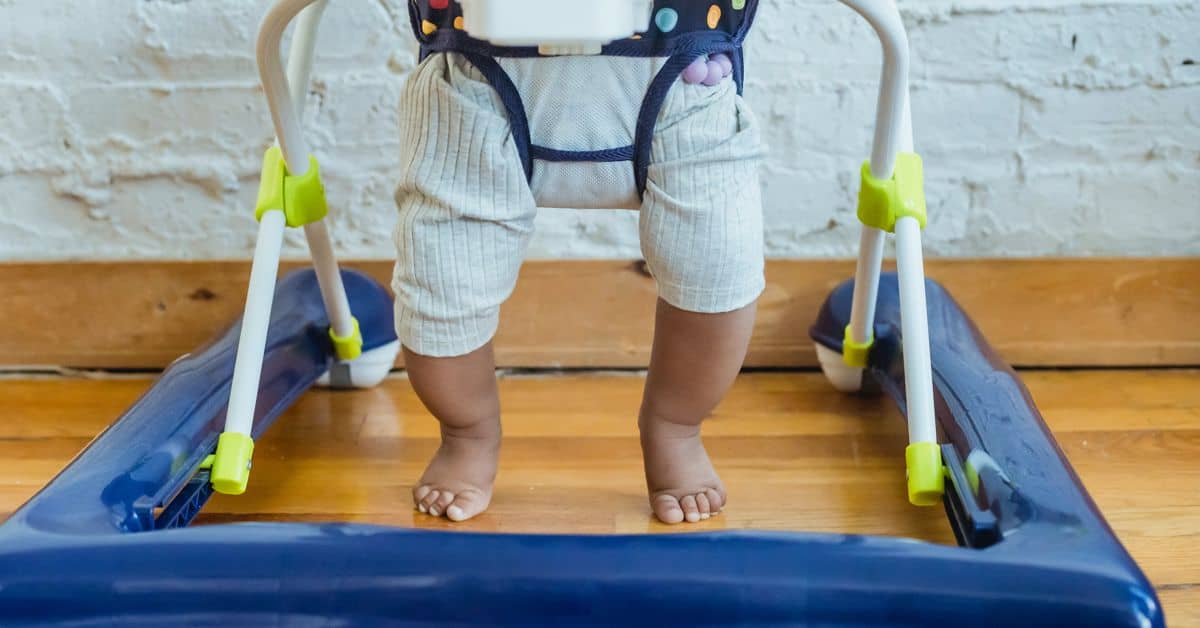The Definitive Guide: At What Age Can Your Baby Safely Use a Walker?
You might be tempted by that baby walker, thinking it will give your little one more mobility. But wait, when is it safe to use this device? I’m here to tell you the truth, no complicated terms, just plain talk.
Let’s Talk Baby Steps
So, you’re thinking about getting a walker for your little one? Cool! But first, let’s see how they’re doing with their milestones. Each kiddo is different. Can your baby sit up without any help? Are they trying to move their legs a lot? If yes, they’re getting past the super early baby days and might be ready for a walker.
Wait, Is My Tot Physically Ready?
Is your baby pretty stable on their feet, not too wobbly? That’s a great sign! Usually, babies get there between 6 and 12 months, but hey, no pressure. Each child has their own pace. Just keep an eye out for when they seem stronger and more balanced.
Safety Dance

Safety first, right? When picking a walker, make sure it ticks all the safety boxes. And when your baby’s cruising in their new ride, always keep a close watch. You’ll also want to baby-proof the area – no stray toys or cords.
Picking the Right Ride
Choosing the right walker is kinda like choosing a car, but for your baby. There are different types – somewhere they sit, some they push, and even ones that don’t move but have fun activities. Look for a comfy seat, something that can grow with your baby, and a sturdy build. It’s all about what works best for your little one.
Perks of the Walker Gang
And here’s the fun part: walkers are awesome for helping your baby develop those motor skills and coordination. Plus, it’s a joy to watch them get more independent, step by step.
Unleashing Baby Swagger: Why Walkers Are the Superheroes of Tiny Tot Development

Let’s break down what makes baby walkers so cool for your little one’s growth, minus the complicated stuff. They’re kind of a secret superpower for your kiddo’s early wins.
Independence Vibes:
Walkers? They’re like a ticket to freedom for your baby. Suddenly, they’re zooming around, exploring everything on their own terms.
Motor Skills Magic:
Unsteady steps? Walkers turn them into confident strides. It’s like having a personal coach for balance and coordination.
Baby Body Builders:
Think of a walker as a mini-gym for those tiny legs, getting them strong and ready for all sorts of adventures.
Space Odyssey:
Maneuvering a walker around the house? It’s like a mini-mission in space, teaching your little astronaut about space and obstacles.
Social Butterfly Mode:

Walkers are great for making your little one more sociable. They’ll be cruising up to people and toys, super outgoing and ready to interact.
Confidence Boost HQ:
Mastering a walker is a big win for your child’s confidence. They’ll feel like they can conquer anything!
Explorer Extraordinaire:
With a walker, your tiny explorer starts discovering the world on their own, one step at a time.
Walking Prep Rally:
It’s the perfect warm-up for the walking leagues. Walkers get those little feet moving in the right direction.
Sensory Fiesta:
Every surface and texture becomes a new experience in a walker. It’s a sensory party, and your baby’s the guest of honor.
Muscle Control Bootcamp:
Walkers are the secret to sneaky muscle-building. Your child’s legs get stronger without them even knowing it’s exercise!

Leg Day Deluxe:
Every day is leg day in a walker, but in a fun way. It’s laying the groundwork for those future first steps.
Active Lifestyle Kickstart:
It’s not just a walker; it’s a ticket to an active lifestyle. From the get-go, your baby’s all about movement. It’s like they’re born to be on the move!
Watching your child grow and explore in a walker is something special. It’s not just about moving around; it’s about gaining confidence, skills, and a love for adventure. Get ready to cheer on your little explorer!
Alternatives to Baby Walker
| Alternative Description | Benefits |
|---|---|
| Stationary Activity Centers | Centers with a variety of activities and toys to stimulate the baby's senses and motor skills, without the risk of moving around. |
| Push Toys | Help babies learn to walk by providing support and stability, encouraging physical development and balance. |
| Sit-to-Stand Walkers | Give a safe way for babies to practice standing and walking, aiding in developing leg muscles and coordination. |
| Playpens | Safe spaces for babies to play and explore, can include different toys and activities. |
| Floor Mats with Toys | Interactive mats with various textures and toys to encourage crawling, rolling, and exploration, aiding in physical and cognitive development. |
| Crawl Tunnels | Encourage crawling, an important developmental stage before walking, and help develop spatial awareness and motor skills. |
| Soft Building Blocks | Used to encourage babies to reach, stack, and balance, helping develop fine motor skills and hand-eye coordination. |
| Swings and Rockers | Provide sensory stimulation and comfort, should be used under supervision and for limited periods. |
| Padded Crawling Tracks | Specially designed crawling tracks with padding to encourage safe crawling in a defined area, promoting motor skills. |
| Parent-Assisted Walking | The safest and most effective method for teaching walking, this also strengthens the parent-child bond. |
Remember, the most appropriate mobility aid depends on an individual’s specific needs, abilities, and the nature of their mobility challenge. It’s recommended to consult with a healthcare professional or physical therapist to determine the most suitable option.

When to Slam the Brakes
Hold the brakes if your crib has stairs or uneven terrain – walkers and uneven ground are like oil and water. And if your cutie isn’t feeling the need for speed? Maybe hold off for a bit. There’s no rush, and alternative methods for muscle building are always on the table.
The Grand Entrance
So, you’ve picked the Cadillac of baby walkers. Now what? The grand entrance, of course. Start slow – like baby steps, literally. Short sessions, tempting toys, and maybe a snack bribe. Supervision? Mandatory. It’s showtime, baby!
Supervise and High-Five
Supervision isn’t just a buzzword. You gotta be in the trenches with your little explorer. High-five them, toss in some encouragement, and maybe even make funny faces. It’s not a spectator sport; it’s a tag team event. You and your tiny partner-in-crime taking on the world.
Walkers: Busting Myths
Let’s set the record straight about some walker myths. You might’ve heard stuff like they slow down walking skills or are kinda risky. Well, let’s dig into the real deal and bust those myths with some solid facts.
| Myth | Fact |
|---|---|
| Myth 1: Walkers impede the natural process of learning to walk. | Fact 1: Walkers can actually complement the walking process by strengthening leg muscles and improving balance and coordination. |
| Myth 2: Babies in walkers don't learn to walk properly. | Fact 2: While walkers shouldn't replace natural walking practice, they can be an additional tool that encourages babies to use their legs and feet, potentially aiding in the development of proper walking techniques. |
| Myth 3: Using a walker can lead to delayed muscle development in babies. | Fact 3: Walkers can encourage babies to use their leg muscles, which can contribute positively to muscle development, especially when used in moderation and combined with other forms of physical activity. |
| Myth 4: Walkers discourage babies from crawling, an important developmental stage. | Fact 4: While walkers provide an alternative form of mobility, they don't necessarily prevent babies from crawling. It’s important to balance time in the walker with ample opportunities for crawling and other activities. |
| Myth 5: Babies become too dependent on walkers, affecting their independence. | Fact 5: Walkers can actually boost confidence and independence by giving babies a sense of mobility and the ability to explore their environment. |
| Myth 6: Walkers are harmful to a baby’s posture and natural gait. | Fact 6: When used appropriately and for limited periods, walkers do not negatively impact a baby's posture or gait. It's crucial to choose a well-designed walker and to ensure that the baby is ready physically. |
| Myth 7: Walkers can delay other aspects of motor development, like hand-eye coordination. | Fact 7: Walkers often come equipped with toys and activities that can enhance hand-eye coordination, offering a multifaceted approach to motor development. |

Final Lap – It’s a Wrap
So, we’re at the end of our walker chat. Bottom line – baby walkers are pretty cool for helping your little one grow. They’re fun, exciting, and can really boost those early skills. Just remember, timing and safety are super important. When’s the best time for a walker? When everything just clicks and your tiny explorer is itching to start their walking adventure.
FAQs – Your Burning Questions
Q1: Can I put my baby in a walker once they sit up?
A: Sitting up is great, but also check if they’re strong in their legs and excited about moving. It’s a mix of things.
Q2: Are walkers safe for all kids?
A: They can be, if used the right way. But they’re not one-size-fits-all. Always best to chat with your pediatrician.
Q3: How long should my kiddo be in a walker each day?
A: Short and sweet – 15-20 minutes max. And mix it up with other fun stuff too!
Q4: Do walkers mess with natural walking skills?
A: No worries there. Walkers can actually help with walking skills, not mess them up.
Q5: Are stationary activity centers a good swap for walkers?
A: Totally! They’re a fab alternative if you’re not into walkers. They offer lots of the same benefits, minus the moving around.
